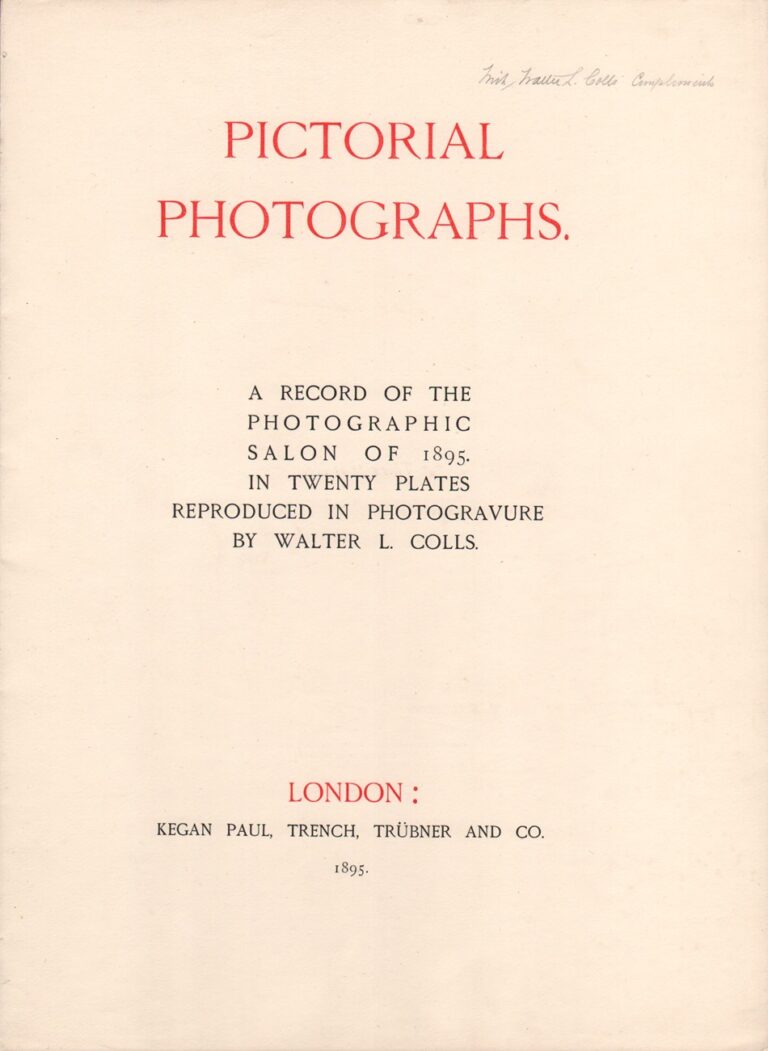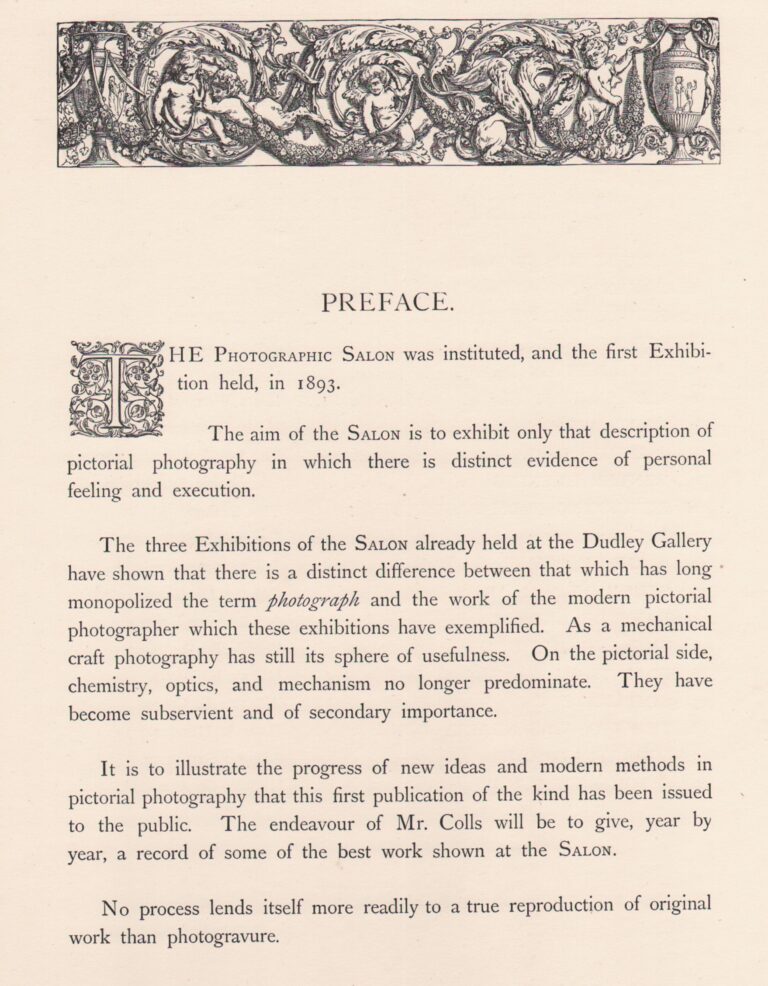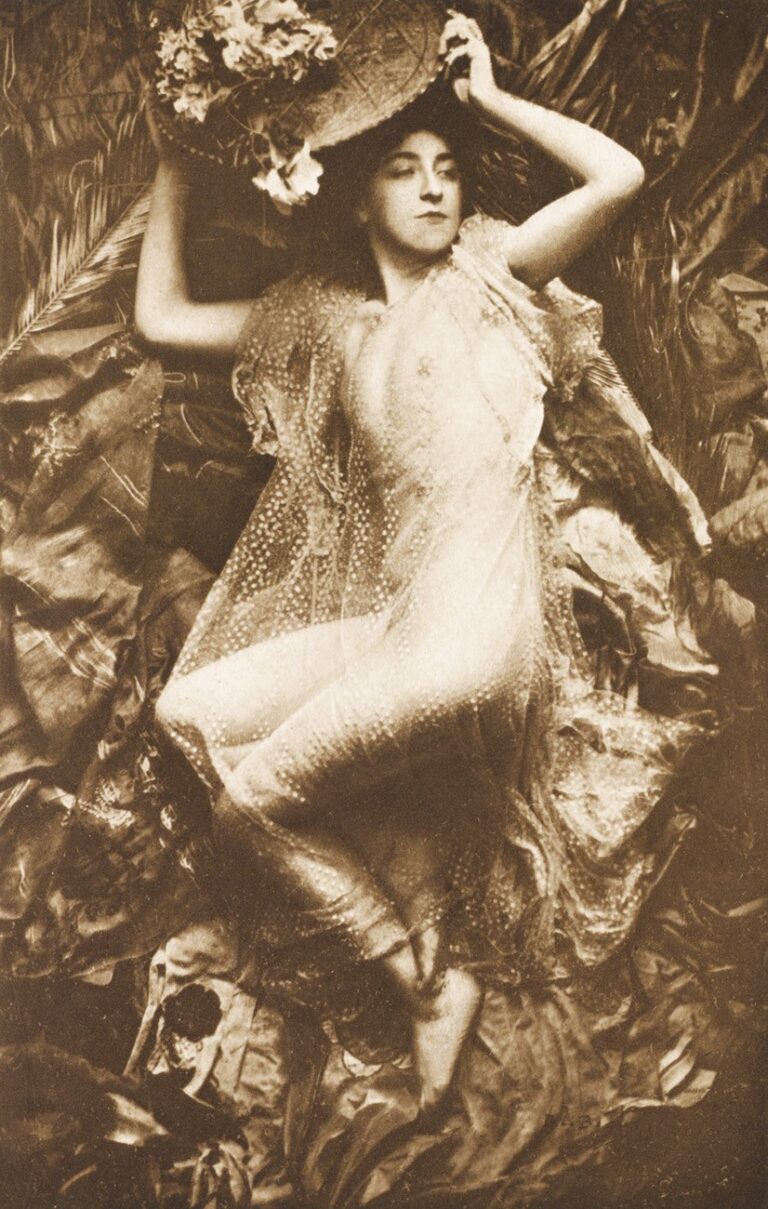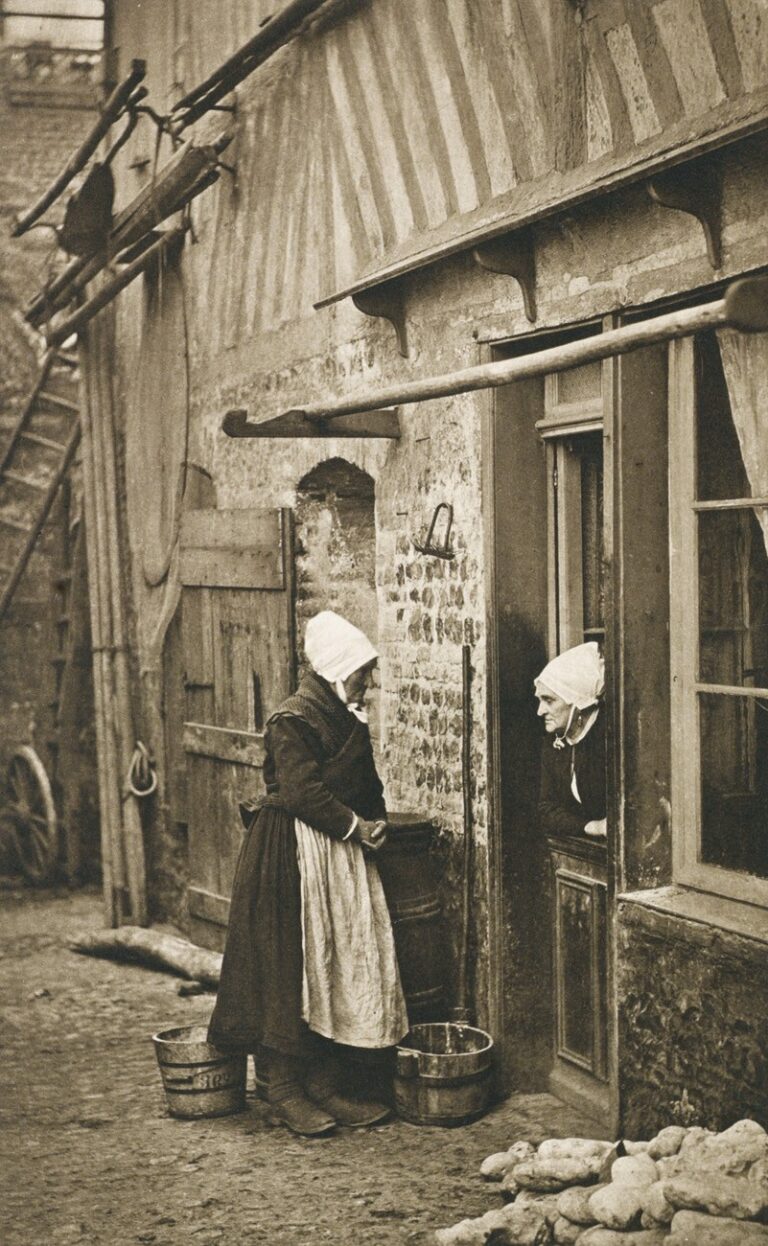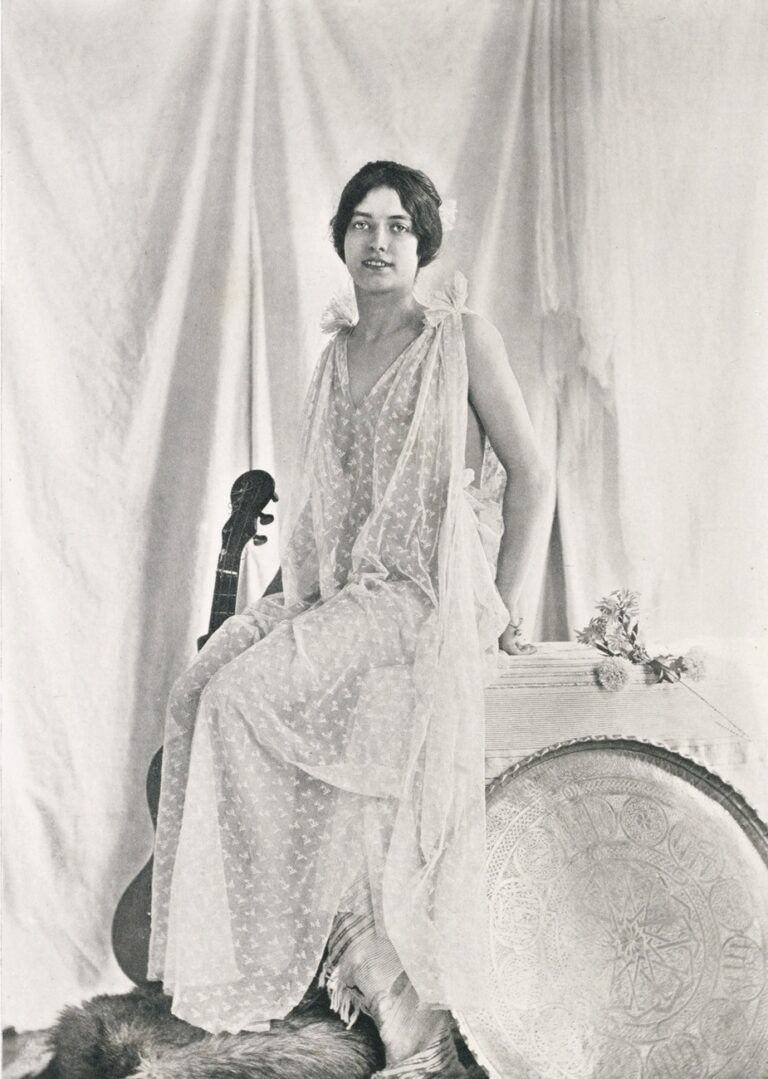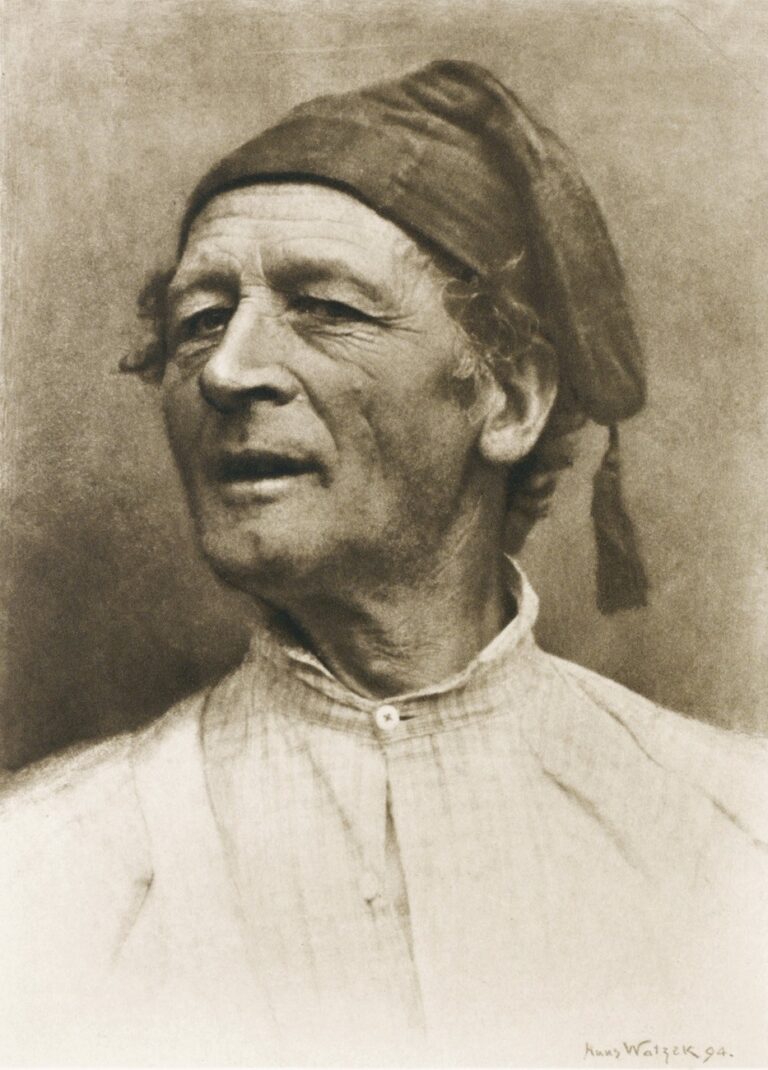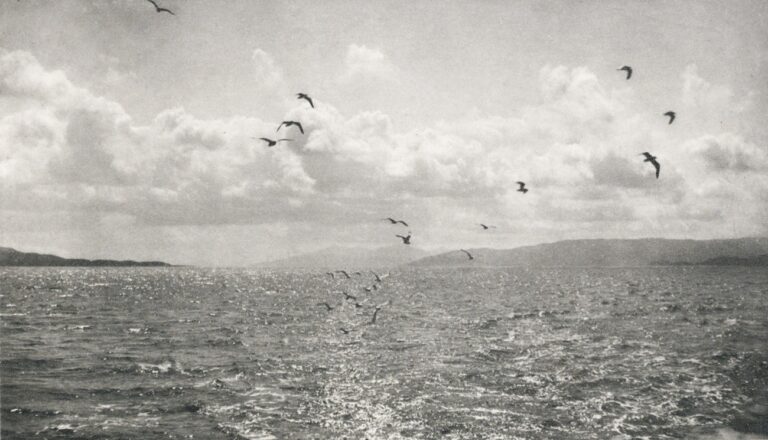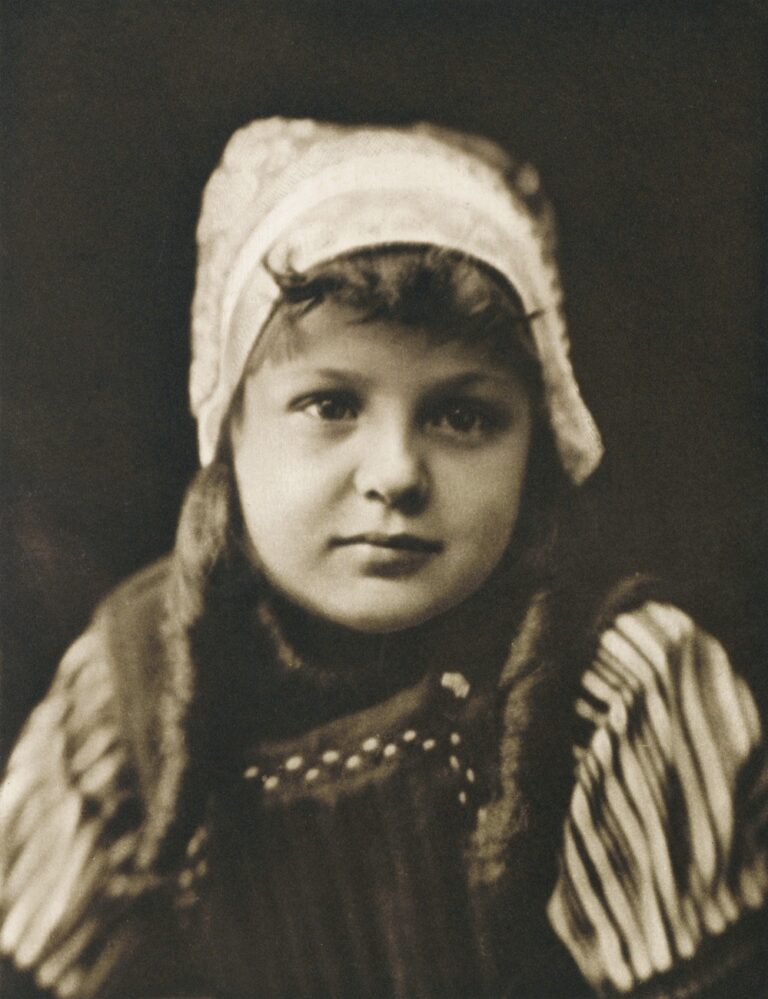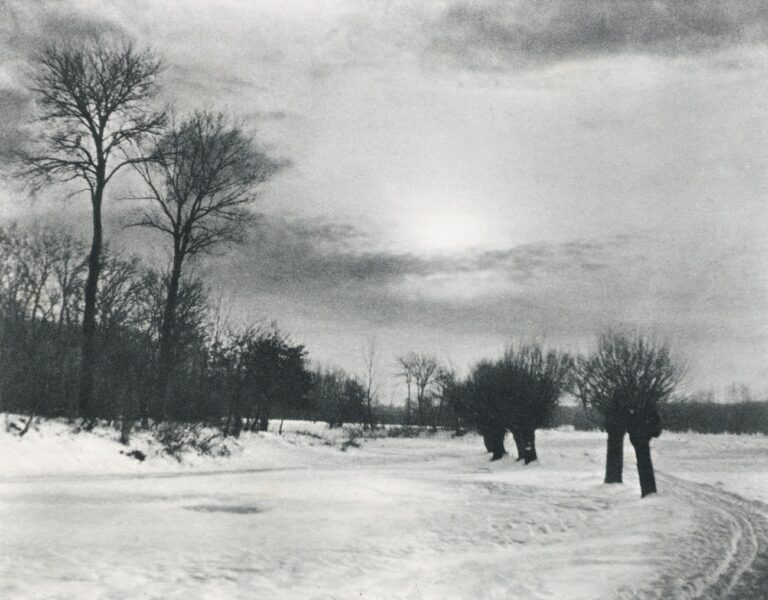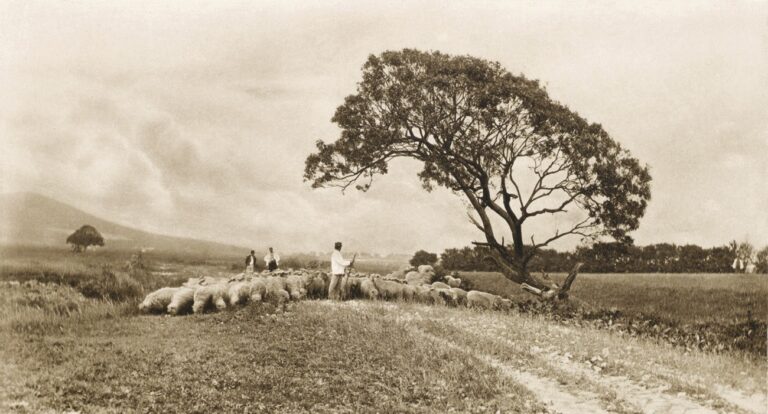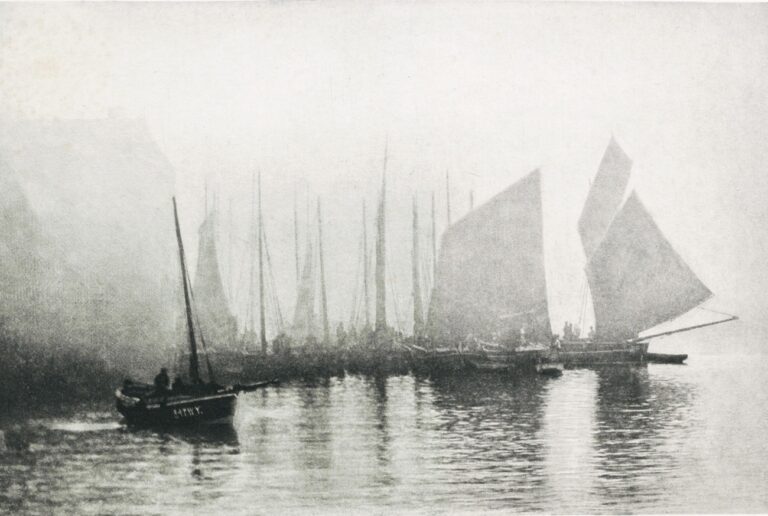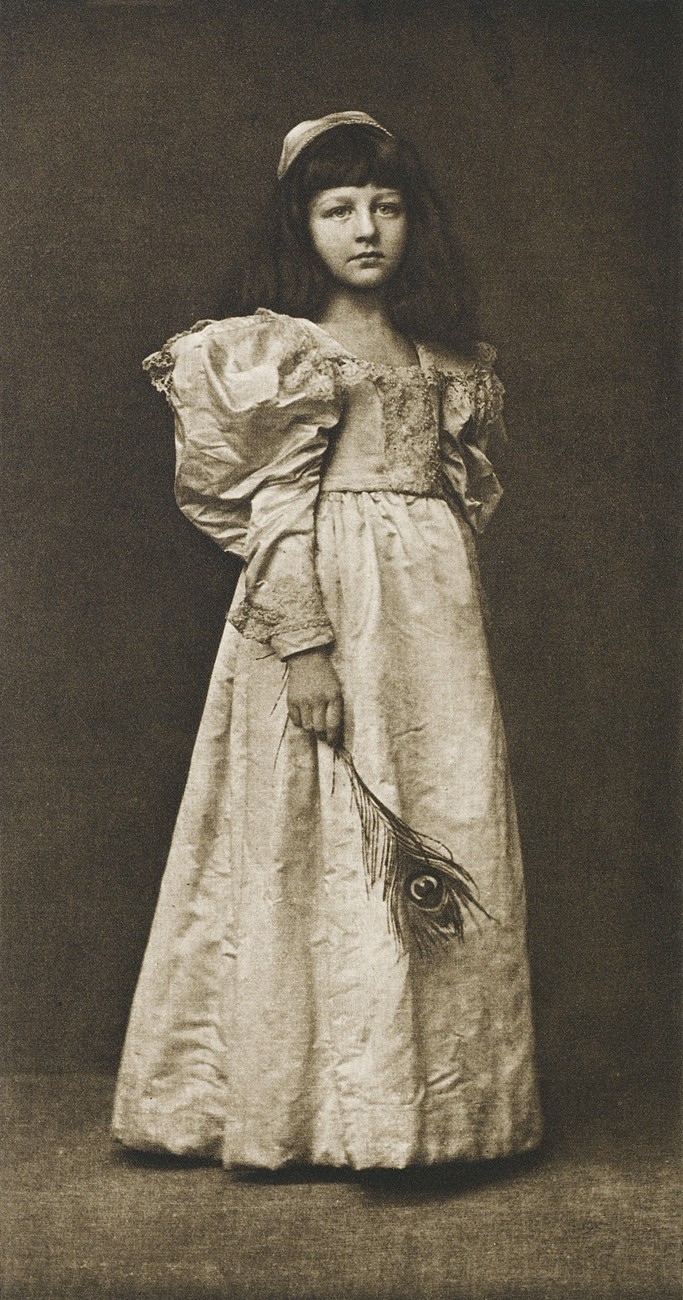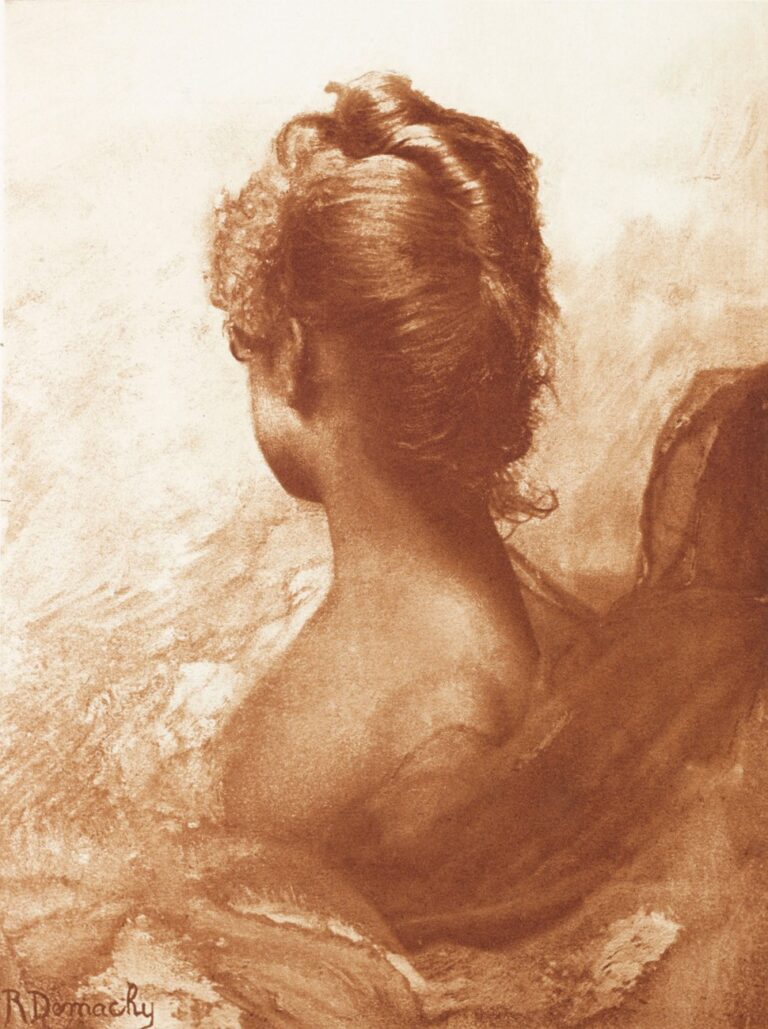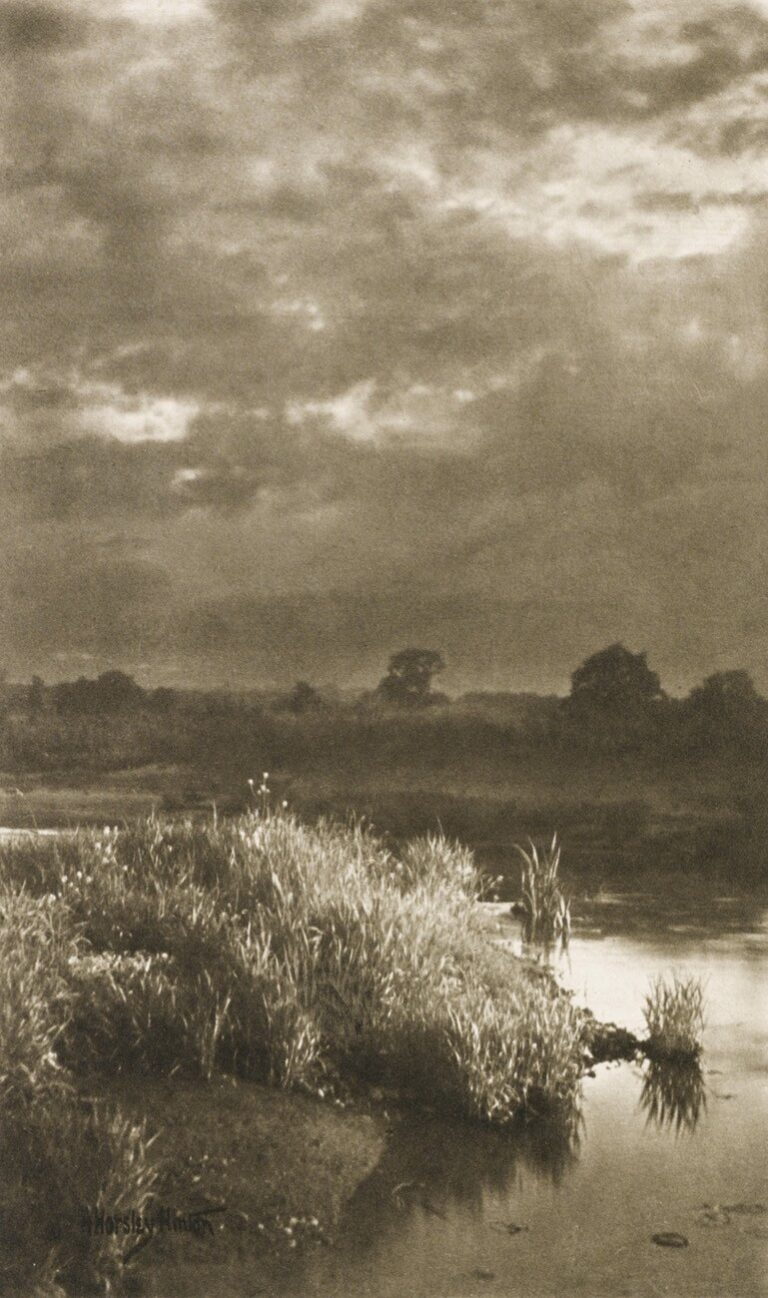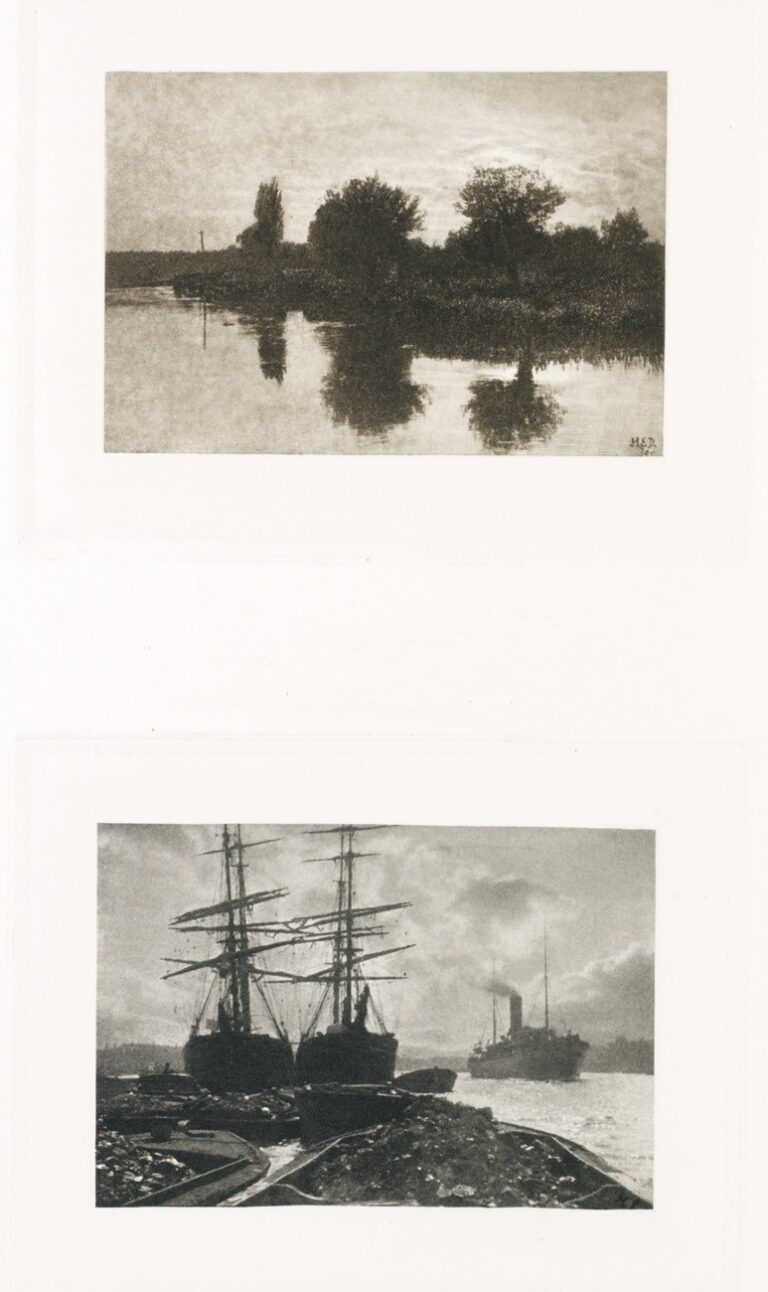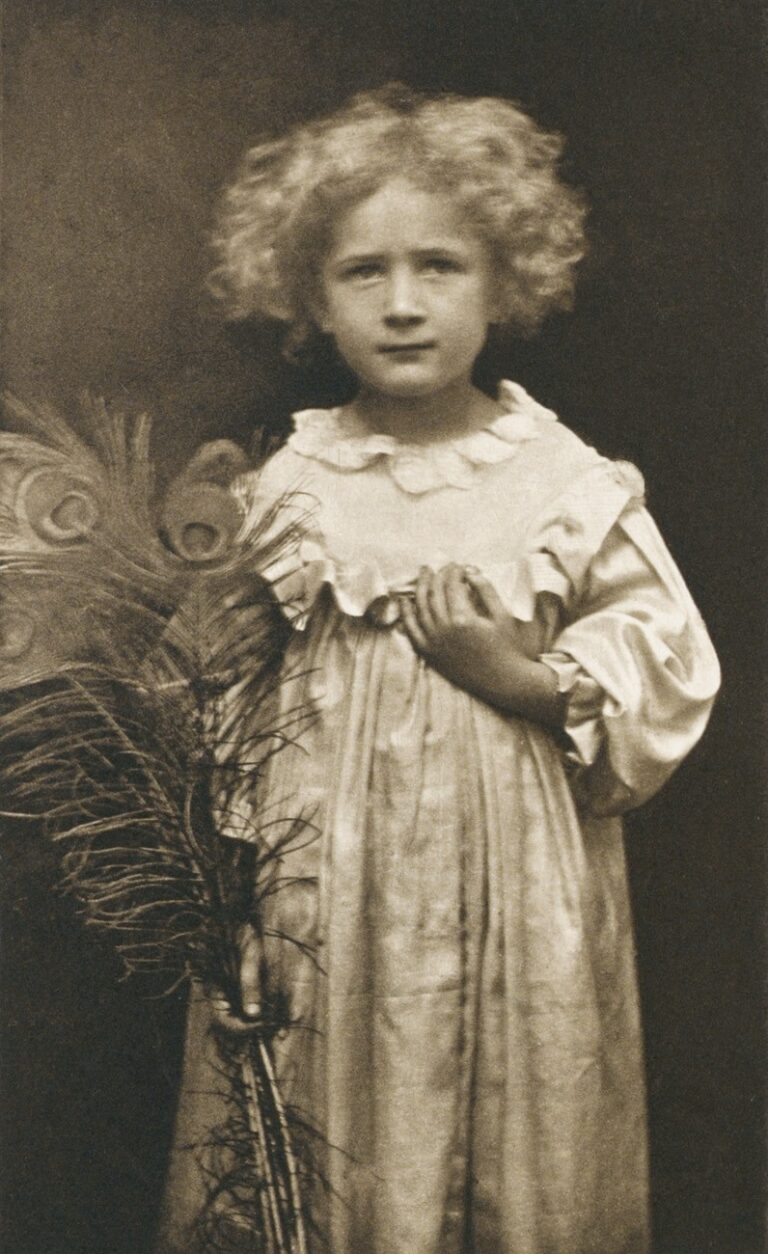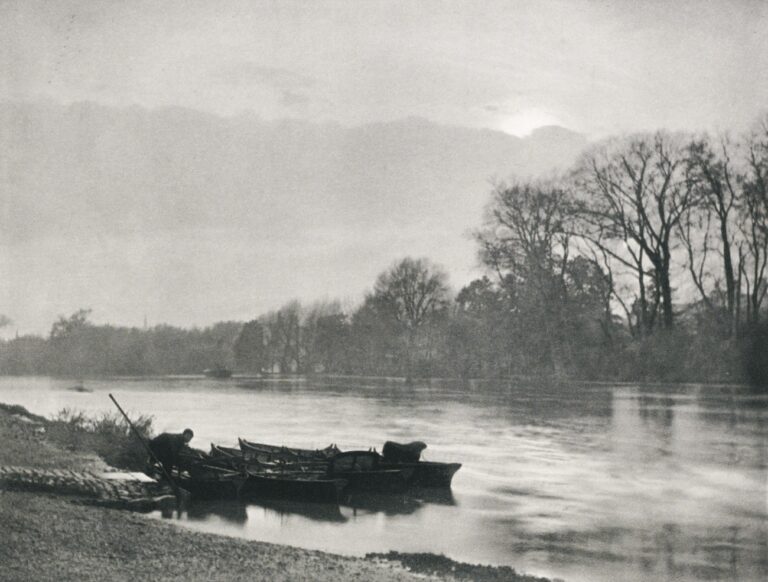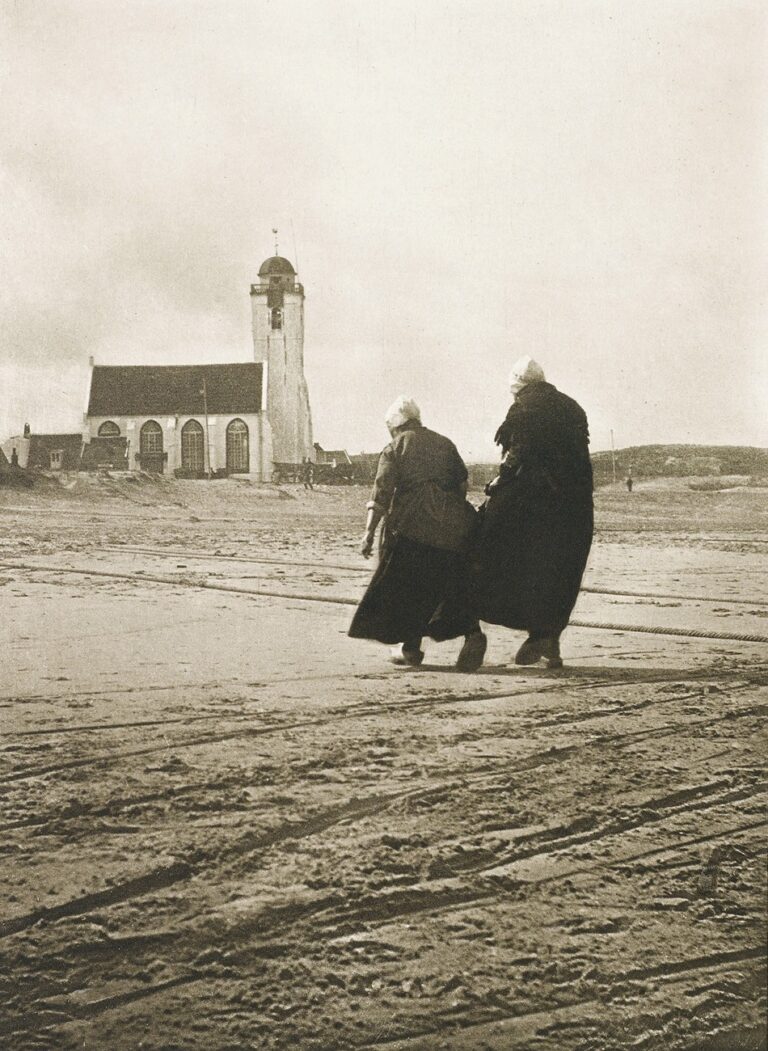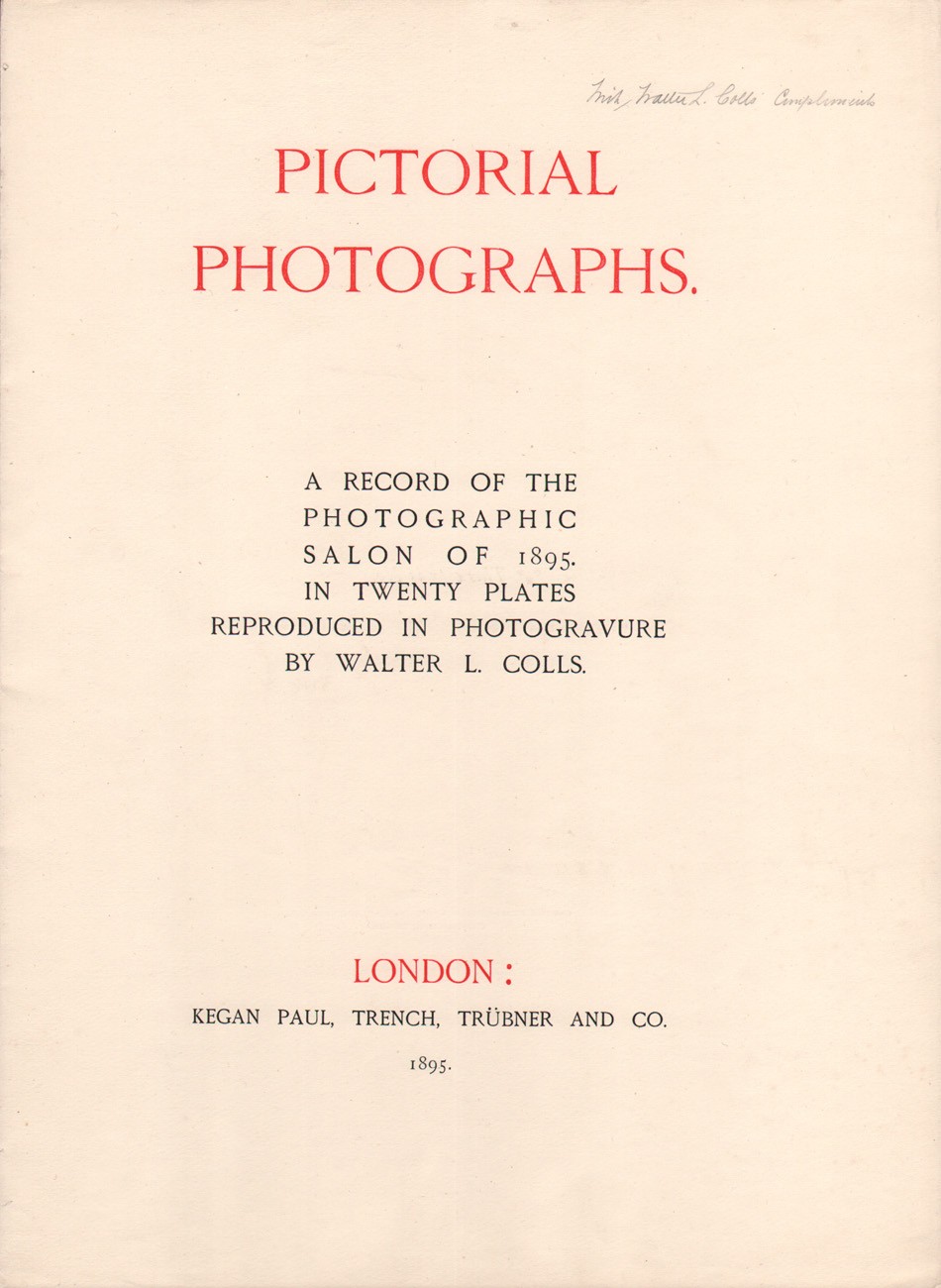
Pictorial Photographs : A Record of the Photographic Salon of 1895
A PhotoSeed highlight: Walter L. Colls: Copperplate Engraver & Amateur Photographer can be found here.
Introduction: The Photographic Salon & its portfolios
Beginning in 1895 and ending in 1897, English professional copperplate etcher, engraver, and printer Walter L. Colls of London issued yearly portfolios of photogravures on behalf of The Linked Ring commemorating their annual Photographic Salon which debuted in 1893. Colls, an amateur photographer himself exhibiting his own work since at least 1885, etched and printed the very fine photogravures issued with these portfolios. This online gallery showcases all plates from the 1895 portfolio.
Beginnings & Purpose: The Photographic Salon
In the early 1890’s, the idea behind the formation of The Photographic Salon in England was a simple one: difference of opinion. In describing the separation of an enlightened group of photographers from the stagnant Photographic Society of Great Britain, contemporary English photographic historian Margaret Harker spells out the time-line:
“The secession from the Society in 1891-2 of Robinson, Davison, Blanchard, Maskell, Sawyer, and others was essentially a protest against prevalent attitudes to photographic art within the Society’s Council. This exodus removed the best in photographic art from that scene but it also affected the Secessionists in that they no longer had a platform or exhibition venue (inadequate though these may have been) for communication with each other and their public.” 1.
The Linked Ring Brotherhood
Harker explains this secessionist splinter group went on to form their own association, a group formally adopting the name of the Linked Ring on May 27, 1892 during a meeting at the Camera Club in London. 2.
The group would soon become known as The Linked Ring Brotherhood. Harker explains:
“The Linked Ring Brotherhood was constituted as “a means of bringing together those who are interested in the development of the highest form of Art of which Photography is capable”. It embodied the Secession (Aesthetic) Movement in Photography in Britain, having been founded in April 1892 by a small group of distinguished photographers who seceded from the Photographic Society of Great Britain in 1891-2.” 3.
Only one year later, in April, 1893, the Linked Ring decided to:
“form a Salon of Pictorial Photography and that the exhibition should be displayed at the Dudley Gallery, Piccadilly, in the autumn. The leading principle would be that of the most rigid selection of the work sent in. Preferential treatment would not be accorded to Links who would compete on an equal footing with outsiders.” 4.
Harker’s book The Linked Ring – The Secession in Photography In Britain published the following informational sheet “given to postulants for admission to the Linked Ring.”:
The Linked Ring
The LINKED RING has been constituted as a means of bringing together those who are interested in the development of the highest form of Art of which Photography is capable. The present is felt to be an opportune time for the formation of a sociable coterie of picture-loving, as separate from purely scientific or practical, craftsmen.
Those only are, in the first instance, eligible, who loyally admit artistic capabilities in Photography, and who are prepared to act with a spirit of LOYALTY, both as regards the furthering of the objects of the LINKED RING and TOWARDS THEIR FELLOW-MEMBERS, if admitted.
The organization has no President or Officers, no subscription, and no rules or regulations, but some customs and observances, the knowledge of which is imparted to those who are admitted within its limits.
The LINKED RING dines together monthly, at a very moderate cost.
Its device is “Liberty and Loyalty.” 5.
__________
Significantly, the decision by the group to allow no “preferential treatment” to its own members was made. The Linked Ring quickly opened its membership rolls to photographers from around the world whose work adhered to their philosophical tenants. The result was exemplary work exhibited at its annual Photographic Salons beginning in 1893- insuring the best work would be exhibited. Soon, the Linked Ring gained credibility in the larger world view of pictorial photography beginning to take hold as a major movement-one that rejected the “old school” ways of photography. These annual salon exhibitions were:
“seen as the focus of the Ring’s endeavours to achieve recognition for photography as Art. From 1893-1909 it was unique as an annual exhibition in solely promoting pictorial photography on an international scale and in setting a very high standard of selection of photographs to be shown under the best possible conditions at the time.” 6.
British Press reactions to the First Photographic Salon of 1893
The First Photographic Salon opened to the public on October 9, 1893 (a private showing was held for members two days earlier) at the Dudley Gallery in Piccadilly and concluded one month later on November 11. Press reviews from the period were both favorable and completely disagreeable to the salon’s objectives. We reprint two here for purpose of edification:
British Journal of Photography: The Photographic Salon
On the Whole, Good
“The Photographic Exhibition known as “The Photographic Salon” was opened to the public, at the Dudley Gallery, on Monday last. The circumstances surrounding its inception were of such a remarkable piquant character that it is only the bare fact to say that its opening has been awaited with great curiosity. The popular belief, not altogether unsupported by weighty evidence, is that the Salon has been started in opposition to the old-established Exhibition of the Photographic Society of Great Britain, and, despite all the sophistry and special pleading that may be adduced to prop up the somewhat thin contention that it is intended to supplement rather than to rival the display in Pall Mall, we believe that it could only be with difficulty that an impartial judge would lean to the former view. There is, of course, the odd plea that the Salon affords scope for the exhibition of purely “art” photographs which the older exhibition does not; but the irony of fate opportunely intervenes to demolish any such fantastic theory, for at Pall Mall just now there may be seen on the walls medalled exhibits as strange, as bizarre, and as wishy-washy as the most conscientious Salonist could possibly desire. If, then, the Photographic Society has proved itself willing to recognize the special variety of photographic production which it is the aim of the Salon to nurture and encourage, the raison d’être of the latter institution inevitably rests on the most slender support, and the continuance of a second exhibition, either in a rival or supplementary capacity, is out of the question.
There are nearly 300 pictures on the walls at the Dudley Gallery, over 480 having been rejected by the committee of selection. The 300 exhibits are the work of about 110 persons, nearly half of whom, singular to tell, are also exhibitors at Pall Mall. These figures indicate that there is not, after all, a very large number of people anxious to demonstrate the necessity of a second exhibition, otherwise it is difficult to account for such an even-handed support of the two. It would probably be near the mark to assume that, except in the cases of about half-a-dozen gentleman whose names the reader can supply for himself, nobody cares two straws for the Salon as such, save and except that it gives him an additional opportunity of challenging a verdict upon his powers from the critical public; and a cheap opportunity, to boot, as the Salon does not charge for wall space.
Coming, however, to the exhibition itself, we must admit that the promoters have done remarkably well, and have succeeded in getting together what is, on the whole, an undoubtedly fine collection of pictures, judiciously chosen and well hung. Indeed, we go further, and say that, in the department of portrait work, there is on view a number of examples we have never seen excelled, and the merit of which is a revelation. Of what are known as composition subjects and figures tidies there are some capital examples, and in the way of land and seascapes some really good efforts. But not all the pictures are of the fuzzy kind; far from it, thank Heaven! A good proportion of them would delight the should of even a photographic optician.” 7.
And this review from “Opinions of the General Press”:
The Star:
Pure Folly
“To turn from these drawings to the photographs in the Dudley Gallery is to be confronted anew with the folly of the men who call their exhibition the Photographic Salon. On of their objects, they announce boldly, is “To strengthen and advance the position that photography is making for itself among graphic arts.” There could be no greater absurdity; photography may advance and develop and progress; it may have in store for us surprises and
Inventions Innumerable;
But it can never be ranked with the graphic arts. I realize that I repeat myself. I have more than once pointed out the distinction between photography, a mechanical contrivance, and art. But the men who exhibit here rest their claims to critical and public interest upon their artistic pretensions. They make it impossible to notice their work, and ignore their ambition to be what they are not. To talk of the drawing made by the sun on the prepared plate is a sad confusion of terms; to vaunt fidelity to Nature as proof of the artistic possibilities of the camera is to misunderstand at the outset the very meaning of art. “Nature is usually wrong,” Whistler says somewhere: is it for the camera to set her right? A photographer like Mr. George Davison may display much feeling and discrimination in
His Selection of Views
To be photographed; but how can he, dependent as he is upon a machine and not upon himself, develop that genius for selection which is exactly what makes the Japanese artist so great? As photographs many of the prints in the collection deserve all praise; Mr. Davison and several others show what can be done with good printing, course-grained paper, and pretty frames. But they are not works of art, graphic or otherwise, and never will be.” 8.
American notice for the 1895 Photographic Salon
For work that eventually made its way into the first salon portfolio issued by the Linked Ring in 1895, it is instructive to look at the exhibition guidelines published in the American journal The Photographic Times:
“We would remind our readers that the Photographic Salon, 1895 (third year), will be held at the Dudley Gallery (Egyptian Hall), Piccadilly, London, W., from September 30 to November 2 next.
The General Committee is composed of the following gentlemen, all of whom have distinguished themselves in the field of artistic photography: Bernard Alfieri, J. Craig Annan, Lionel C. Bennett, J. S. Bergheim, Shapoor N. Bhedwar, Valentine Blanchard, Rowland Briant, Tom Bright, T. M. Brownrigg, Arthur Burchett, A. Buschbek, W. A. Cadby, Eustace Calland, H. Hay Cameron. Lyonel Clark, Francis Cobb, Lewis Cohen, Hector Colard, Walter L. Colls, William Crooke, Henry E. Davis, George Davison, Robert Demachy, R. Eickemeyer, J. Gale, John Pattison Gibson, Karl Greger, Hugo Henneberg, A. Hildesheimer, Alfred Horsley Hinton, Frederick Hollyer, George H. James, Rouille Ladeveze, Baron Alfred Liebieg, Alfred Maskell, H. P. Robinson, Ralph Robinson, Baron Nathaniel Rothschild, Lyddell Sawyer, Alfred Stieglitz, J. Strakosch, Frank M. Sutcliffe, Carl Ulrich, J. B. B. Wellington, H. Van der Weyde, B. Gay Wilkinson, Jr., W. Willis.
The aim of the committee, whose names are given above, is to exhibit only that class of work in Pictorial Photography in which there is distinct evidence of personal artistic feeling and execution.
Careful consideration will be given to all pictures entered for exhibition, and a selection of works of pictorial merit made by the committee. Pictures which have already been publicly exhibited in London will not be accepted.
No awards are offered, and no charge made to exhibitors.
The usual charge of one shilling will be made to the public for admission. Exhibitors will be entitled to a season ticket.
Arrangements will be made for the sale of pictures, if desired, and a commission of 15 per cent, will be charged on sales effected.
Full particulars regarding conditions of entry and forms can be obtained by addressing the editor of this magazine.
It will be noticed that the committee has this year added to the list the names of two of the most prominent amateur photographers of this country, Mr. A. Stieglitz and R. Eickemeyer, Jr.
It is our earnest desire that America shall be well represented at this exhibition, and we trust that all those who feel that they have succeeded in making something more than merely photographic records of scenery or gallery portraits, will enter their work.” 9.
Walter L. Colls: Aquafortist
Englishman Walter L. Colls, a professional copperplate engraver and printer whose studio was located in Castelnau Gardens in Barnes, (South London) was chosen to engrave and print the luxurious portfolios of photogravures first issued in 1895 by the Linked Ring for the Photographic Salon. In many respects, Colls was perfect for the job. This was because he was one of the very early “links” of the Linked Ring itself; honored for his own photographic work as well as sharing the necessary philosophical disposition with Ring ideals when granted membership on June 25, 1892. His self-chosen “link”, derived from aquaforte (etching) was the pseudonym Aquafortist.
Five years earlier, beginning in 1890, Colls cemented his reputation as a highly skilled copper plate engraver and printer for the London publisher Kegan Paul, Trench, Trübner & Co. when he produced four photogravure plates of the work of British photographer Julia Margaret Cameron for the fifth issue of their publication Sun Artists. Colls produced photogravures for the remaining run of Sun Artists, which ceased publication with the eighth issue in July, 1891 and featured the work of photographer Frank Meadow Sutcliffe. The descriptive essay included with this issue by author Charles Noel Armfield on Sutcliffe’s work seems a bit over the top in his description of Colls photo engraving skills but is instructive nonetheless. An extract:
“Before quite leaving this subject of “Sunshine and Shower” I should like to speak of the extreme beauty and delicacy of Mr. Colls’ prints. It so happens that of this particular picture I have three prints: 1st, a silver print; 2nd, a platina print; 3rd, the one by Mr. Colls. The first two are by Mr. Sutcliffe, the first given to me by him some six years ago, and the second sent to me by him early this year-the second is in many points superior to the first, but I am sure Mr. Sutcliffe will forgive me if I say that neither of them can compare with Mr. Colls’, indeed, unless I had seen and examined them I could not have believed that the printing from the same negative could have produced such different results. In the two prints by Mr. Sutcliffe many of the details which I knew I ought to see I never could find, whereas in Mr. Colls’ print these details, such as the cordage against the dark sails, the overlapping of the sails, the seams in the sails, the details of the hull and deck of the schooner, the lines of the cobbles, with their thwarts, oars, and other details, are most beautifully and delicately defined, and make this print a most valuable record for the artist.” 10.
Appropriately, a half-page advertisement for Colls studio appeared in this last issue:
Copperplate Photo. Etching and Engraving.
_______
MR. WALTER L. COLLS
Wishes to draw the attention of Publishers, Authors, Artists, Photographers, etc. to his processes for the
re-production of
Photographs from Nature, Pictures, Engravings,
Drawings Woodcuts, etc.
The advantages which he claims for his Plates over the ordinary process of Photogravure are, greater
richness in quality, truer rendering of values, increased durability, and lower cost.
The Illustrations in many of the most important Works published and in course of publication have
been re-produced by Mr. Colls’ processes.
_______________
Numerous Medals have been awarded, and Press Notices for excellence of work received.
___________________
Estimates and further information may be obtained on application at the Studios, personally or by letter.
_________________________
CASTELNAU GARDENS, BARNES, SURREY.
________________________________________
The Illustrations in this Number were Photo-Etched by Mr. Colls. 11.
Before the Sun Artists commission, Colls had made a name for himself in photogravure and amateur photography. In 1889, he is listed as being a vice president along with his fellow English photographer Peter Henry Emerson (who championed naturalistic photography) at the West London Photographic Society. 12.
Colls relationship with Emerson went further. Around this time or perhaps earlier, he taught the photogravure process to Emerson:
“He personally learned the process from W. L. Colls, England’s leading practitioner of photogravure, then went on to etch the plates and print all the gravures that appeared in his subsequent books. He asserted that photogravure was “the only satisfactory way of publishing photographs.” 13.
As an etcher and photographer, online exhibition records from The Royal Photographic Society first list Colls in 1887, with a photograph titled Sea Urchins, sounding suspiciously like the medal-winning photograph exhibited a year earlier taken by Sutcliffe known as Water Rats and widely imitated. In 1889, his entries were of a photographic etching after a Dante Gabriel Rossetti painting as well as several intaglio reproductions of artwork and a photographic etching titled The White Terraces from an unknown source. In 1895, Colls, now a Fellow of the Society, had a sole entry; Simplicity, his own photogravure of a young girl with unkempt hair clutching peacock feathers and staring matter-of-factly into the camera. It was decided to be included with the Pictorial Photographs portfolio he printed for the Linked Ring that year. Later, Society records for 1903 indicate Colls had moved away from exhibiting his own photographs and concentrated on commission work. For this final year listing, Colls exhibited reproductive engravings from drawings and paintings, but also of “five nature negatives”. 14.
Photogravure portfolios of The Photographic Salon
1895-1897 are the three known years in which The Linked Ring issued a commemorative portfolio of large-plate photogravures. Bearing the imprint of the London publisher Kegan Paul, Trench, Trübner & Co., the photographic plates were etched and printed by Walter L. Colls. Letterpress for 1895 was executed by Charles Whittingham and Co. for the Chiswick Press of London. Particulars for the 1895 plate paper portfolio are as follows: green cloth board, three-point folder with ribbon ties. Embossed in gilt on cover: THE PHOTOGRAPHIC SALON 1895. Twenty photographs on 19 loose plates, (1 diptych) each measuring 37.8 x 27.9 cm (11 x 15 inches) are included along with a separate four-page letterpress sheet (folded) featuring separate title, limitation, preface and plate list pages. Plates are sequentially blind-stamp numbered in corner.
All of the portfolios were printed in three photogravure editions: a Japanese proof edition (priced at £3 3s. and described in The Key Set as: cream moderately thick smooth wove Japan paper) in 50 copies only; an India (chine-collé) plate paper edition of 100 copies priced at £2 2s.; and an off-white, heavy plate paper edition (of an undetermined number but perhaps no more than 300 copies) priced at £1 1s. 15.
Successive years of the portfolio included fewer plates. The 1896 version included 18 and the 1897 version had 17.
Although an advertisement for an 1898 edition of the portfolio appeared in Photograms of 98 stating: “Preparing for Publication”, none have turned up. 16.
In addition to these specialty portfolios, The Linked Ring issued regular annual catalogs for The Photographic Salon exhibits. These were indexed by exhibitor as well as advertising matter. The Metropolitan Museum of Art in New York City has copies for several of the exhibitions originally owned by Alfred Stieglitz, the 1898 catalog contains 48 pages. 17.
Solicitations for the first year 1895 portfolio showed up on both sides of the Atlantic, this from The Photogram in London:
“A handsome and luxurious souvenir of the Salon exhibition will be published by Walter L. Colls in the shape of a portfolio of large photogravure reproductions of the leading works. Mr. Colls’ name is sufficient guarantee for the reproduction work. The subscription will be £1 1s. for ordinary prints, with folios of India paper and Japanese paper prints at £2 2s. or £3 3s. Mr. Colls address is Castlenau-gardens, Barnes, London, S.W.” 18.
Two years later, writing in Camera Notes, an enthusiastic Alfred Stieglitz penned:
Photographic Salon Portfolios (London).
“It is with pleasure that we call the attention of our readers to the Photographic Salon Portfolios of 1895 and 1896, published by Walter Colls, in London. It is astonishing that these important collections of photogravures are quite unknown to American photographers. Of the 1895 collection the British Journal of Photography says:
This collection of photogravures, the work of Mr. W. L. Colls, has been happily chosen, as it includes examples of the various “schools” that contributed to the last exhibition of the Salon, although possibly there is an unnecessary preponderance in favor of foreign workers. Among the twenty pictures selected for reproduction may be mentioned Henneberg’s “At the Rushy Pool,” H.P. Robinson’s “In Kilbrennan Sound,” Sutcliffe’s “Fog,” Craig Annan’s “A Little Princess,” Horsley Hinton’s “Day’s Decline,” Stieglitz’s “Scurrying Home,” Demachy’s “Rouen,” etc. It goes without saying that Mr. Colls’ photogravures are capitally done, and he has, in most cases, very successfully reproduced the colors of the originals. If we demur to the implied theory of the preface that modern pictorial photography is only to be dated from 1893, we none the less recognize this collection of pictures as one of which not only the Salon and Mr. Colls, but photography itself may be proud.
The frontispieces of Camera Notes, Nos. 1 and 2, were taken from these collections, and serve as specimens of the excellence of the work represented in these choice reproductions. We advise all those interested in pictorial work to procure copies, which may be had by addressing Walter L. Colls, The Studio, Castelnau Gardens, Barnes, S.W. England. The price for each collection, consisting of twenty photogravures in a handsome portfolio 11×15 inches, is $5.15 for plate paper prints, $10.30 for prints on India paper, and $15.45 for Japanese proofs. If preferred by intending subscribers, the Chairman of the Publication Committee will be pleased to forward orders. A. S.” 19.
Insightfully and finally, contemporary author Christian Peterson further dissects Colls portfolios, with an emphasis on the 1895 edition in relation to Camera Notes:
“Most directly related to what would eventually end up in the pages of Camera Notes, however, were the handsome portfolios commemorating the London photographic salons of the 1890’s, at least three of which Stieglitz owned. Separate from the checklists for the exhibitions, these deluxe publications presented a selection of twenty images from each salon, finely printed in photogravure by Walter L. Colls, the skilled printer who taught the process to P.H. Emerson. With Camera Notes in mind, a careful study of Pictorial Photographs: A Record of the Photographic Salon of 1895 is very instructive.
Fully half of the images from this 1895 publication were later duplicated in issues of Camera Notes. The photogravures in Camera Notes were not only the same size as those in the salon portfolio, but also printed in similar ink colors. Stieglitz made no secret of his source for these images, crediting Colls and reviewing the portfolios in the magazine.” 20.
Notes:
1. The Linked Ring – The Secession in Photography In Britain, 1892-1910 : Margaret F. Harker: A Royal Photographic Society Publication: 1979: p. 64
2. Ibid: p. 84
3. Ibid: Introduction: xi
4. Ibid: p. 104
5. Ibid: Introduction (unpaginated)
6. Ibid: p. 95
7. Functions of the Month: in: The Photographic Review of Reviews: Edited by Walter D. Welford: Iliffe & Son: London: Vol. II, No. 23: November 15, 1893 p. 362
8. Ibid: pp. 362-363
9. Editorial Notes: in: The Photographic Times: Edited by Walter E. Woodbury: August, 1895: The Photographic Times Publishing Association: New York: p. 113
10. Mr. F.M. Sutcliffe: by Charles Noel Armfield: in: Sun Artists: Number 8, July, 1891: Kegan Paul, Trench, Trübner & Co.: London: p. 57
11. Ibid: (v)
12. Photographic Societies of the British Isles and British Colonies: in: The International Annual of Anthonys Photographic Bulletin: Iliffe & Son: London: Volume II: 1889: p. 478
13. Platinum Printing and Photogravure: in: Peter Henry Emerson and American Naturalistic Photography: Christian A. Peterson: Minneapolis Institute of Arts: 2008: p. 17
14. Online record: Walter L. Colls: Exhibitions of the Royal Photographic Society 1870-1915: Catalogue records from the annual exhibitions
15.Advertisement: in: Photograms of 98: The Best Photographic Work of the Year Reproduced and Described:Dawbarn & Ward: London:1898: p. xxvI
16. Ibid
17. Catalogue of the Sixth Exhibition of the Photographic Salon: Dudley Gallery: London: 1898: in: Alfred Stieglitz Collection biblio #1316: The Metropolitan Museum of Art: New York
18. Prints: in: The Photogram: Editors-H. Snowden Ward, Catharine Weed Ward: Dawbarn & Ward:Vol. II, November, 1895: p. 282
19. Camera Notes: The Official Organ of the Camera Club, New York: Edited by Alfred Stieglitz: New York: Vol 1., No. 2. October, 1897: p. 54
20. The Photogravure Process and Precedents for Camera Notes: in: Alfred Stieglitz’s Camera Notes: Christian A. Peterson: The Minneapolis Institute of Arts in association with W.W. Norton & Company, Inc.: New York | London: 1993: pp. 35-36
